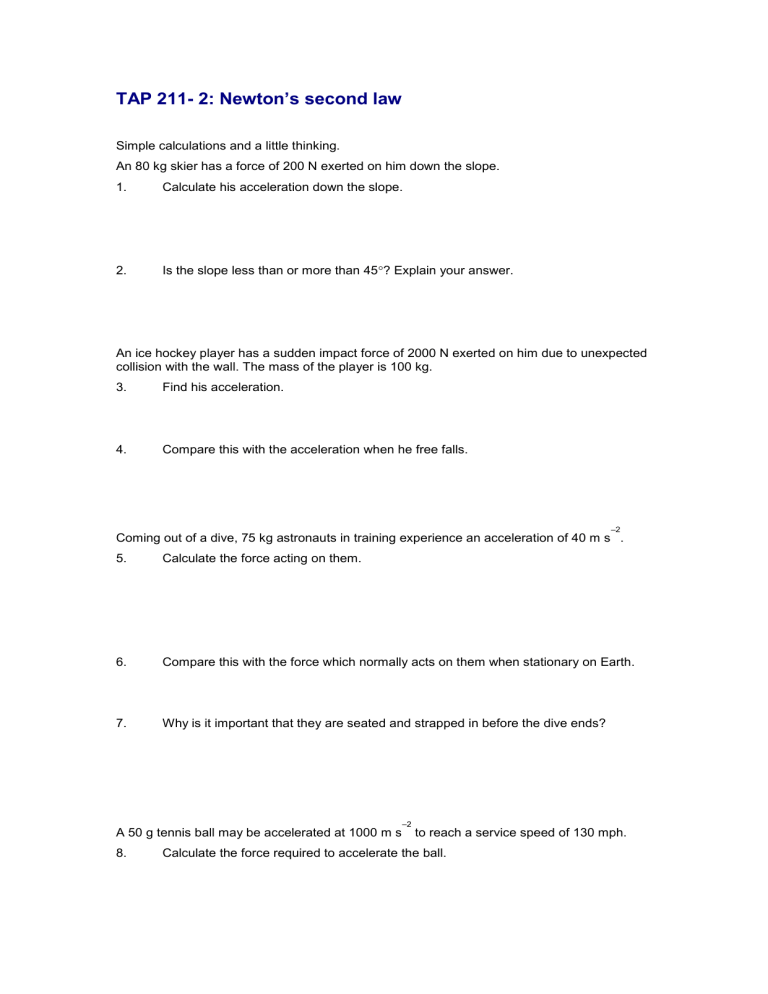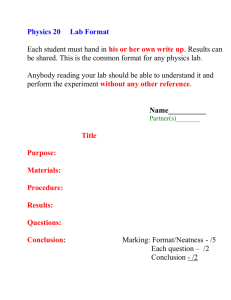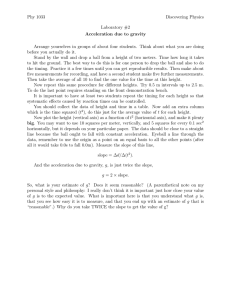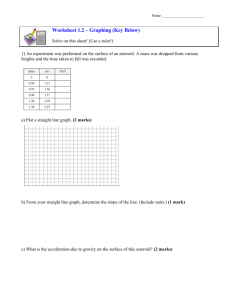Newton's Second Law Worksheet: Physics Problems

TAP 211- 2: Newton’s second law
Simple calculations and a little thinking.
2.
An 80 kg skier has a force of 200 N exerted on him down the slope.
1. Calculate his acceleration down the slope.
Is the slope less than or more than 45
? Explain your answer.
3.
4.
An ice hockey player has a sudden impact force of 2000 N exerted on him due to unexpected collision with the wall. The mass of the player is 100 kg.
Find his acceleration.
Compare this with the acceleration when he free falls.
Coming out of a dive, 75 kg astronauts in training experience an acceleration of 40 m s
–2
.
5. Calculate the force acting on them.
6.
7.
Compare this with the force which normally acts on them when stationary on Earth.
Why is it important that they are seated and strapped in before the dive ends?
A 50 g tennis ball may be accelerated at 1000 m s
–2
to reach a service speed of 130 mph.
8. Calculate the force required to accelerate the ball.
4.
5.
6.
7.
9. Is your answer reasonable? Comment.
When a force of 200 N is exerted on an asteroid it accelerates at 0.002 m s
–2
.
10. Find the mass of the asteroid.
Practical advice
Some straightforward, 'get you started' questions.
Social and human context
Enormous. You might challenge students to come up with a piece of mechanical engineering that does not involve Newton's laws – perhaps a pin board on the lab wall….
Answers and worked solutions
1.
2.
3.
8.
9.
10. a
F m
200 N
2 .
5 m s
– 2
80 kg
Slope is less than 45° because at this angle, force down slope = weight /
2, which is greater than 200 N. a
2000 N
20 m s
– 2
100 kg
Twice
3000 N
Four times
Astronauts will be brought to rest at the end of the dive which may require the application of a large force resulting in injury.
F = ma = 0.050 kg × 1000 m s
–2
= 50 N
Not very large – as you can probably lift 250 N with one arm. m
200 N
0 .
002 m s
– 2
1 .
0
10
5 kg
External references
This activity is taken from Advancing Physics Chapter 9, 160S



